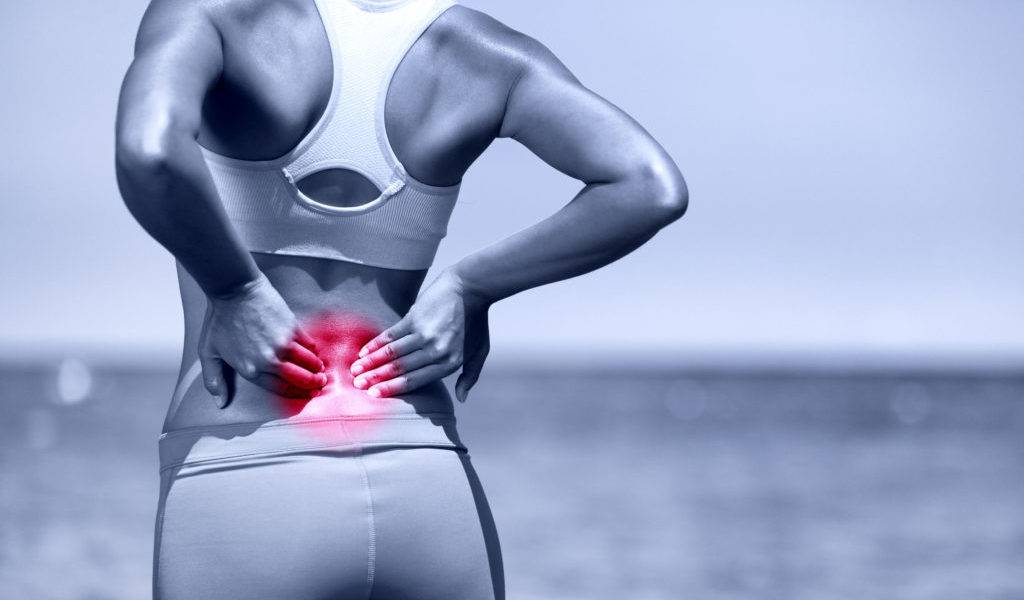Lower back pain and sciatica is a common disorder affecting up to 80% of people during their lifetime.According to Ayurveda, the lower back is ruled by a subtype of Vata known as Apana Vata or ‘downward flowing wind’. Apana Vata is centered in the colon, pelvis and lumbosacral region of the lower back. Here, Vata has found its natural throne from where it governs a variety of physiological functions, including movement in the lower back, hips and thighs, and all excretory processes of the body (feces, urine, menstruation, etc.)
The dry quality of Vata, in excess, can lead to weakness and changes in the structure of the spinal joints.
Sciatica is known in Ayurveda as Grdhrasi which means ‘vulture’. This descriptive name refers to the limping gait of a person due to the excruciating pain from sciatica. The meaning of Vata is ‘that which spreads’. It is said in Ayurveda that “where there is pain, there is Vata”. Sciatica is a classic example of a Vata disorder. Although the problem starts in the lower back, the pain spreads down the leg.
Ayurveda offers a range of natural treatments for sciatica and lower back pain.
Treatments For Sciatica And Lower Back Pain
1. Kati Basti
Kati Basti is a treatment of the lower back, unique to Ayurveda. ‘Kati’ refers to the lower back and ‘Basti’ means ‘to hold’. Flour dough is used to form a well on the lower back and is filled with warm oil. The oil is kept warm by continuously replacing it as it cools. The warm oil increases blood circulation in the area, relaxing the muscles, relieving pain, improving movement and reducing stiffness.
2. Massage And Steam Therapy
A traditional Ayurvedic full body massage (Abhyanga) helps to relieve tension in the muscles. Medicated herbal oils are used, which are absorbed through the skin to nourish the body. Abhyanga is traditionally followed by steam therapy – either localized or of the entire body – to further soften and relax muscles.
3. Therapeutic Enema
By inserting herbal oil or a decoction (herbal preparation) into the colon in the form of therapeutic enemas, excess Vata is removed from its main seat in the pelvic area. Both the rectum and colon have a very rich blood and lymph supply that allows for effective absorption. Studies have shown that substances delivered by enemas are more effectively passed into the general blood stream than by oral administration, as it bypasses metabolism in the liver.2
4. Ayurvedic Medicine
The following herbs are often used for reducing Vata in the lower back region.
- Castor oil (Ricinus Communis)
Castor oil has a mild purgative effect which helps to reduce Vata.
- Dashamula
Dashamula is a renowned traditional herbal combination of ten roots.
- Ashwagandha (Withania Somnifera)
One of the most popular Ayurvedic herbs, Ashwagandha is nourishing, rejuvenating and reduces pain.
- Guggulu (Commifora Mukul)
Guggulu is a gum resin obtained from a small tree. It has strong pain reducing and anti-inflammatory properties, widely used for the joints.
Lower back pain and sciatica can be effectively treated by Ayurveda in a great many cases, reducing the necessity for pain killers and even surgery or spinal injections. In addition to the natural treatments for sciatica and lower back pain described above, an Ayurvedic practitioner will also advise dietary and lifestyle changes to avoid the causes of the lower back pain. Thus, the whole body may be brought back into balance.

Leave a Reply
You must be logged in to post a comment.